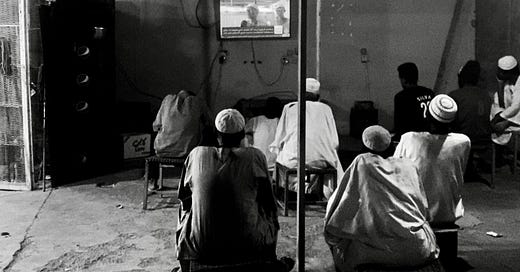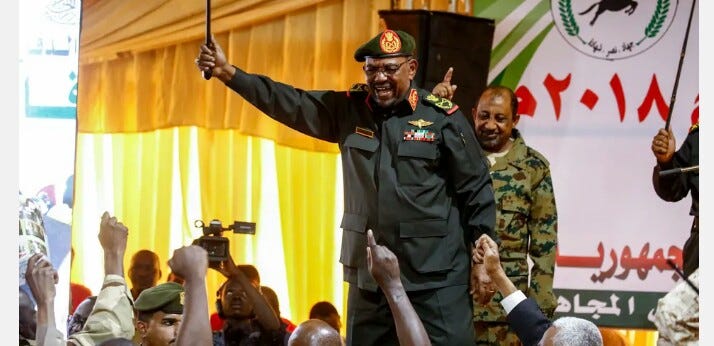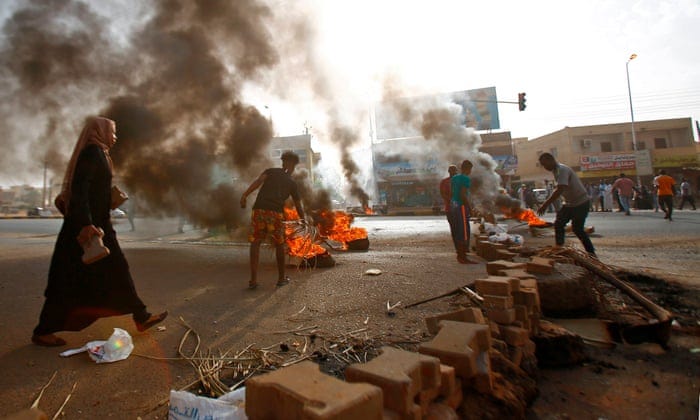the struggle for Sudan.
a deep dive into Sudan’s crisis: how it started, who’s involved, and whether hope is on the horizon.
Good day, spectators,
Welcome to this instalment of our microscope series. These long reads are for paid supporters, and they often focus on larger issues neglected by Western media. Today’s article is actually nothing less than a perfect example of that because we’re learning about Sudan.
Sudan makes the news now and then, but considering the scale of devastation in its civil war, it’s not covered nearly enough. I don’t believe for a second that most people have a good understanding of what’s happening there beyond the simplistic narrative of ‘this group killing that group.’
A couple of weeks ago, I published a microscope deep dive on developments in the Sahel region of Africa. That was a hopeful article, full of optimism for a continent that desperately needs it.
I’m afraid today’s article is not quite as hopeful. Today, I introduce you to the situation in Sudan, a country in North-eastern Africa that, like many postcolonial states, is suffering the consequences of European powers drawing arbitrary lines on a map, boxing together millions of people of different ethnicities, cultures, and creeds.
Since its creation, Sudan has been plagued by war. As I’ve researched this article over the past few weeks, I’ve been struck by how every new piece of information reveals yet another short-lived but violent conflict in the region. While this isn’t a comprehensive history of Sudan, I’ll provide enough context to help you understand the roots of this current crisis. My goal is for you to finish this article with a full and thorough understanding of why there’s a war—and an attempted genocide—raging in Sudan. And, as always, I want you to grasp the geopolitical forces at play behind the scenes.
So let’s crack on.
the history.
To understand Sudan’s current crisis, we need to head back to 2018, with the fall of Omar al-Bashir, the dictator who ruled Sudan with an iron fist for three decades. His regime was marked by widespread corruption, economic mismanagement, and brutal repression, including the Darfur genocide.
In December 2018, protests erupted over rising bread prices and economic hardship. But what began as a bread riot quickly evolved into a nationwide uprising demanding al-Bashir’s removal. The Sudanese Professionals Association (SPA), a coalition of trade unions and civil society groups, played a central role in mobilising mass protests.
By April 2019, after months of nonstop demonstrations, the military ousted al-Bashir in a coup. He was placed under house arrest, and a Transitional Military Council (TMC) took over, promising stability but suspiciously refusing to hand over power to civilians. It’s worth noting that this was the very same military that had propped up al-Bashir’s regime for years.
the Khartoum Massacre and the push for civilian rule:
The military’s promises of stability quickly proved hollow. In June 2019, the Rapid Support Forces (RSF)—a paramilitary group descended from the Janjaweed militias—violently dispersed all the protesters in Khartoum, killing over 100 people in what became known as the Khartoum Massacre. Thousands more were maimed or injured.
Despite the crackdown, protests continued, and international pressure began to mount on the military to negotiate. In August 2019, the TMC and civilian leaders reached a power-sharing agreement, forming a ‘Sovereignty Council’ with both military and civilian members. The council was tasked with overseeing a 39-month transition to democracy, and economist Abdalla Hamdok was appointed prime minister to lead a technocratic civilian government.
the transitional government (2019–2021):
The transitional government faced immense challenges from the start, it was doomed to fail:
Economic collapse: Years of mismanagement, sanctions, and the loss of oil revenues after South Sudan’s secession led to severe inflation and shortages.
Fragile alliances: The military and civilian factions often clashed, with the military reluctant to cede power.
RSF’s rising influence: Led by Mohamed Hamdan Dagalo, better known as ‘Hemedti’, the RSF grew into a powerful force, undermining civilian authority. Remember this name.
the 2021 military coup:
On October 25, 2021, the military, led by General Abdel Fattah al-Burhan, dissolved the Sovereignty Council, arrested Prime Minister Hamdok, and seized power in a coup. The military claimed the coup was necessary to prevent civil war, but most saw it as a blatant power grab.
Massive protests erupted, demanding a return to civilian rule. The military responded with violence, killing dozens of demonstrators. Hamdok was briefly reinstated in a deal with the military but resigned in January 2022, citing the lack of progress toward civilian governance.
The military consolidated control, while the RSF, under Hemedti, became increasingly influential and autonomous. Both factions saw the civilian government as a threat to their power and collaborated in the 2021 coup.
escalation to civil war.
The power struggle between General al-Burhan and Hemedti boiled over in April 2023, plunging Sudan into a brutal internal war. This conflict reflects the unresolved tensions between the SAF and the RSF—two factions of the military establishment that were once allies.

It’s important to note that this is not a fight between the military and civilian advocates. It’s a battle between two military entities vying for control of the country and to really understand why this conflict has dragged on for so long, we need to examine the monsters at the heart of it—the RSF.
the monsters.
If there’s one thing to take away from this article, it’s this: the Rapid Support Forces (RSF) are the most execrable entity in Sudan’s ongoing conflict. This is not just a military faction; it’s a violent, opportunistic band of extremists with a history of genocide, rape, and pillaging.
Keep reading with a 7-day free trial
Subscribe to the spectacle to keep reading this post and get 7 days of free access to the full post archives.







